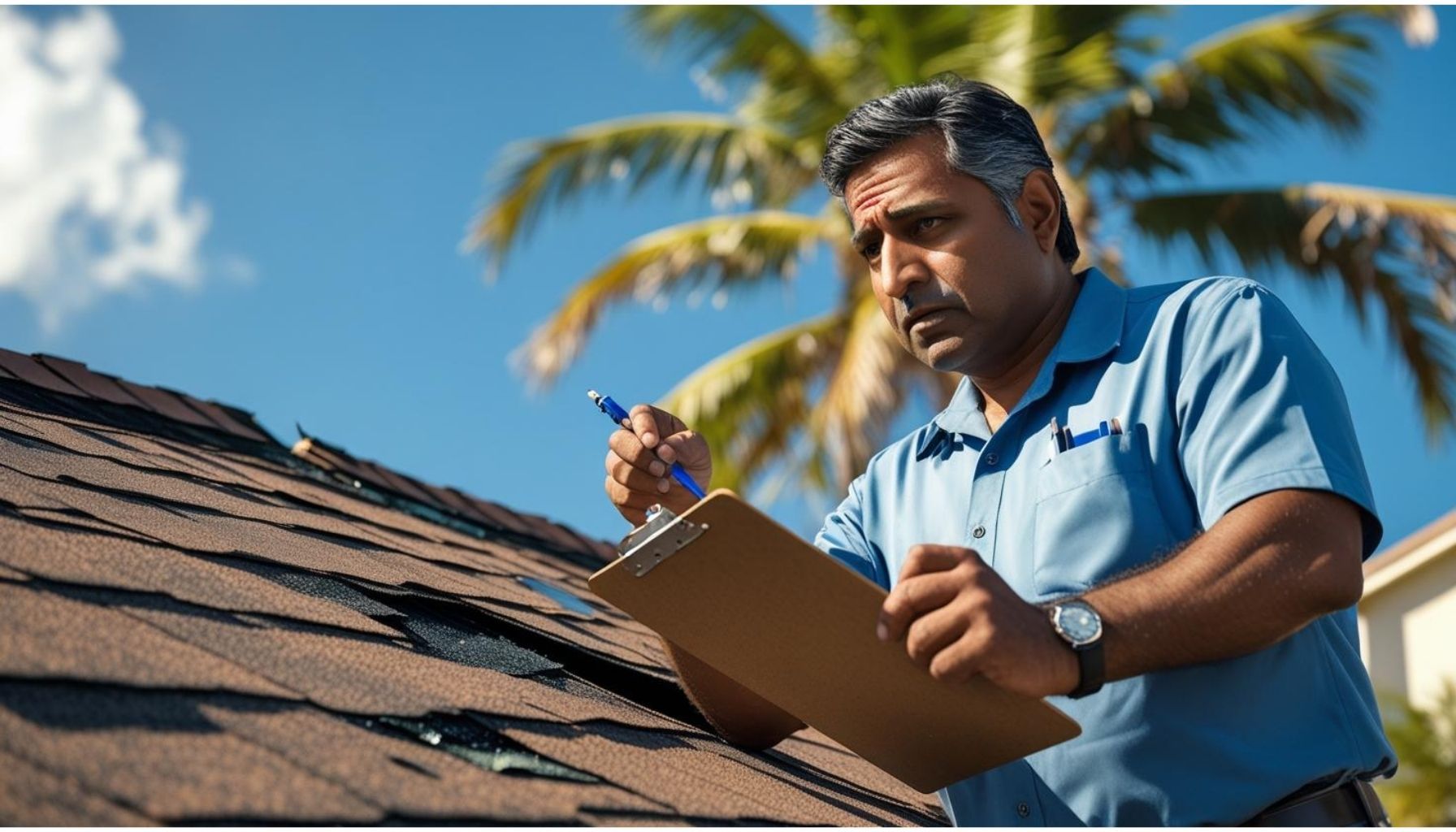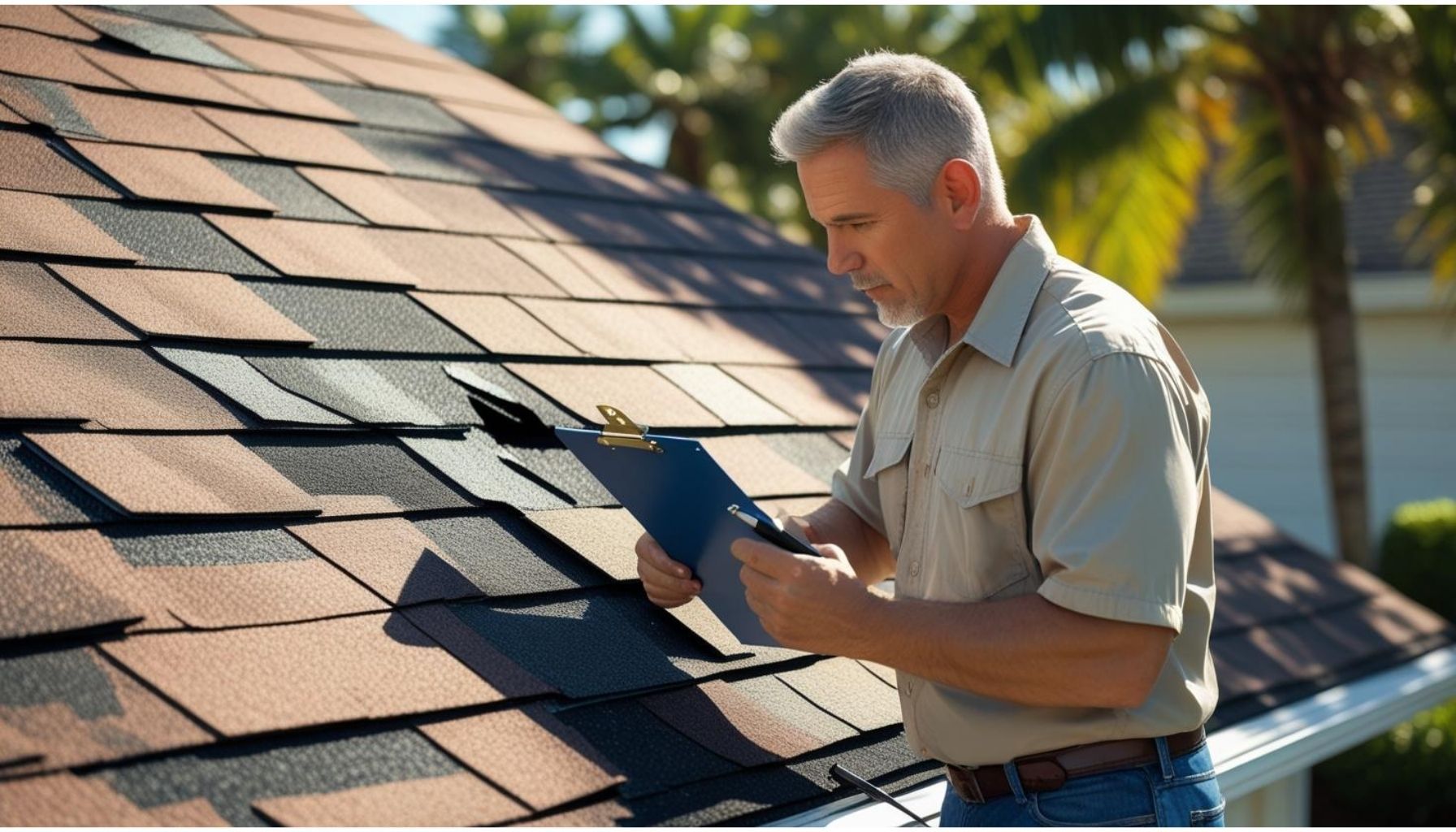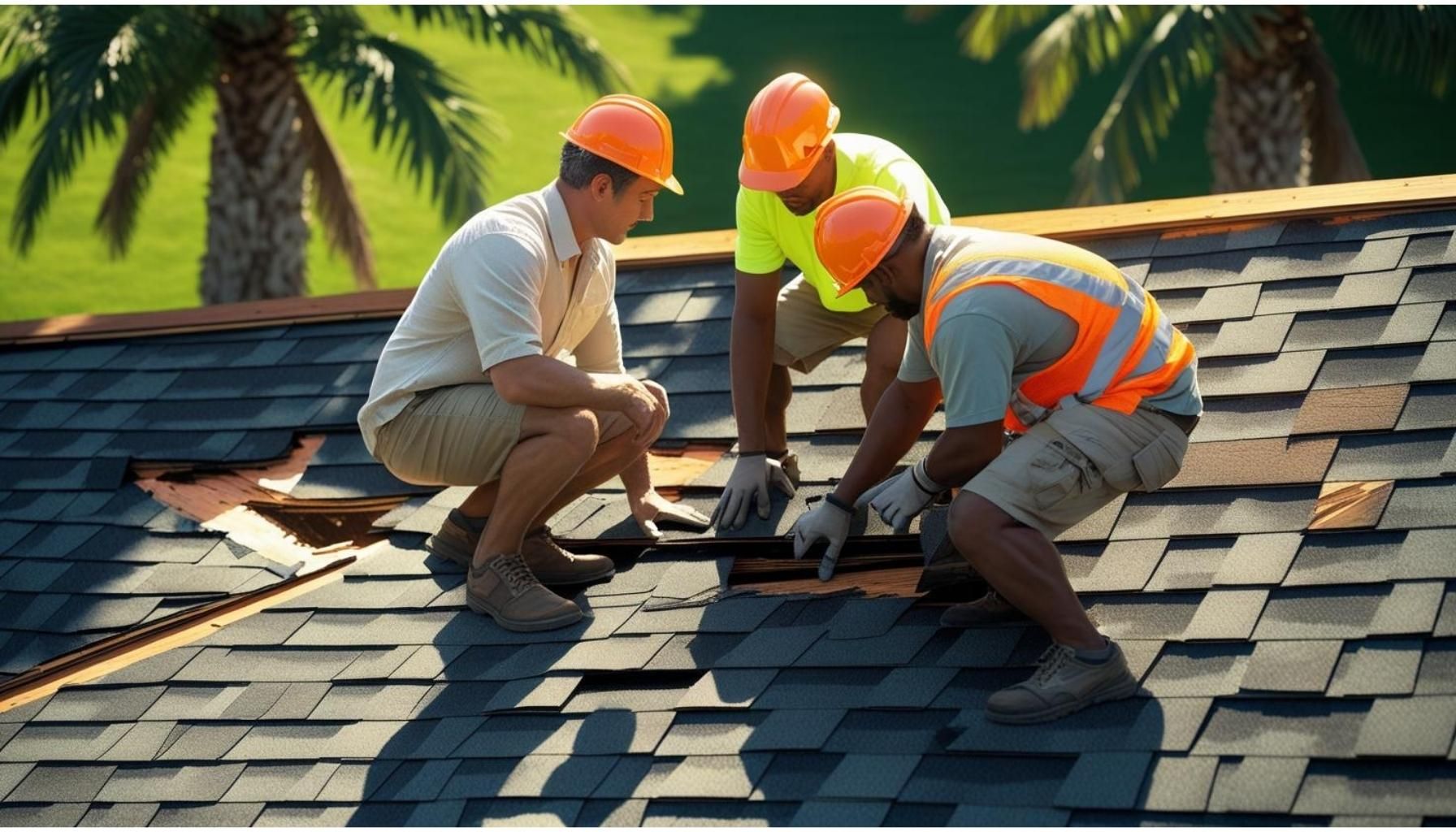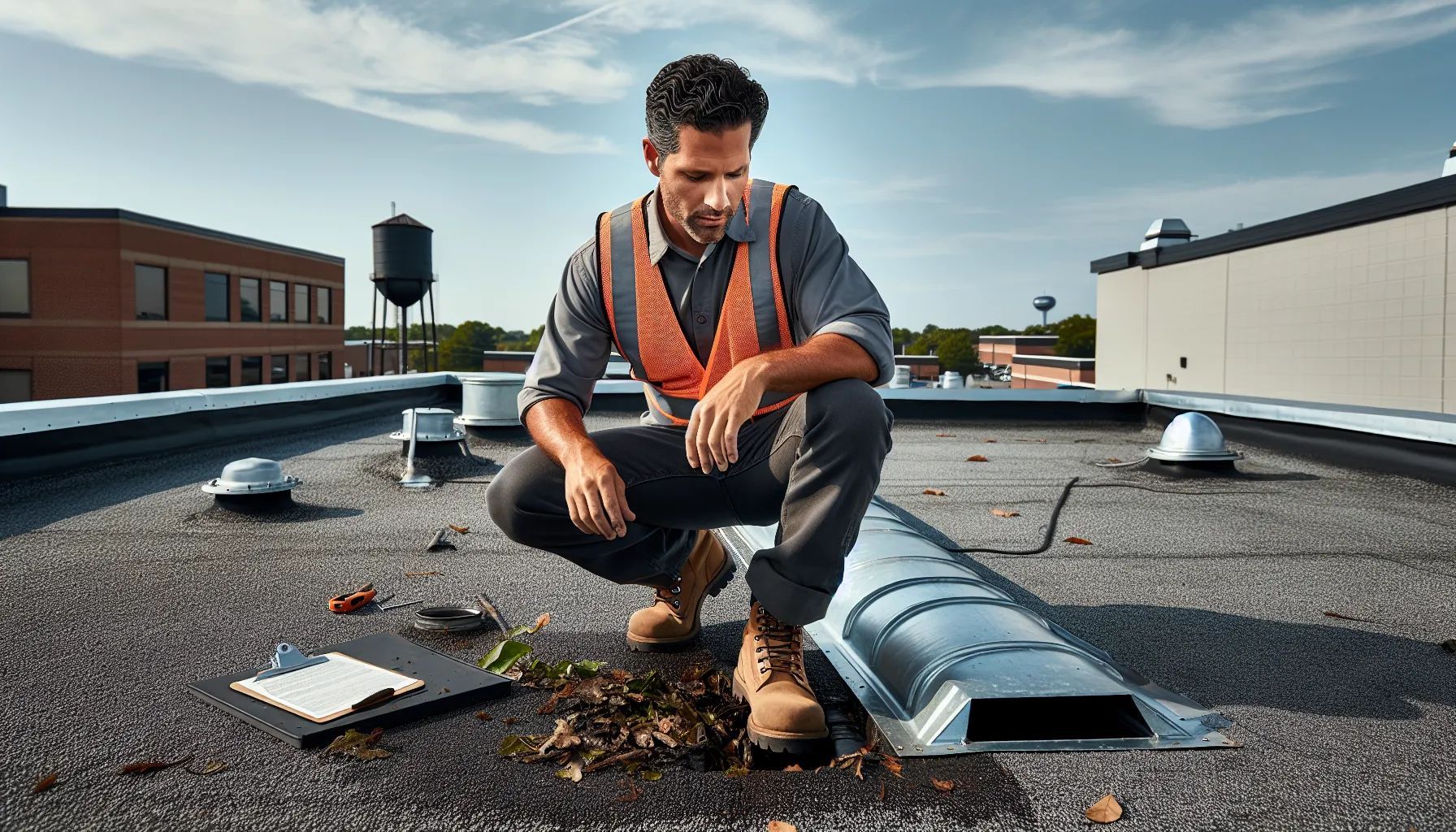How to File a Roof Insurance Claim: Complete Guide to Maximize Your Settlement

When storms strike and damage our homes, filing a roof insurance claim can feel overwhelming. Most homeowners insurance policies cover sudden damage from wind, hail, fire, and fallen trees, but navigating the claims process requires careful attention to detail.
We've all heard horror stories about denied claims and lengthy disputes with insurance companies. The good news? With the right approach and documentation, you can streamline your claim and get your roof repaired quickly. Whether you're dealing with missing shingles after a windstorm or extensive hail damage, understanding the proper steps makes all the difference.
From initial damage inspection to working with adjusters, we'll walk you through everything you need to know about filing a successful roof insurance claim. You'll discover the critical mistakes to avoid and learn insider tips that can help maximize your coverage.
Understanding Your Roof Insurance Policy
Knowing your roof insurance policy details helps you navigate claims effectively and avoid unexpected costs. We'll explain the key components that determine your coverage and potential out-of-pocket expenses.
Types of Coverage: RCV vs. ACV
Replacement Cost Value (RCV) and Actual Cash Value (ACV) represent two different approaches to roof insurance coverage. RCV policies pay the full cost to replace your damaged roof with new materials of similar quality. Insurance companies provide an initial payment for the actual cash value, then release additional funds after you complete repairs.
ACV policies calculate payments differently by factoring in depreciation. A 15-year-old roof receives significantly less coverage under ACV because insurers subtract years of wear from the replacement cost. For example, if your roof replacement costs $10,000 and depreciation equals $4,000, ACV coverage pays only $6,000 minus your deductible.
The coverage type affects your financial responsibility substantially. RCV policyholders typically pay only their deductible for covered damage. ACV policyholders often face thousands in additional costs because depreciation reduces their claim payout. Premium differences between these policies average 10-20%, but the potential savings during a claim make RCV coverage worthwhile for most homeowners.
Common Policy Exclusions
Insurance policies exclude specific types of damage to limit their liability. Wear and tear represents the most common exclusion—gradual deterioration from age doesn't qualify for coverage. Regular maintenance issues like worn shingles or small leaks fall under homeowner responsibility.
Neglect-related damage creates another significant exclusion category. Insurance companies deny claims when poor maintenance contributes to roof failure. Examples include ignoring visible damage for months or failing to clean gutters regularly. Insurers expect homeowners to address minor issues before they become major problems.
Natural disasters often require separate coverage beyond standard policies. Earthquakes, floods, and sometimes wind or hail damage need additional protection. Some insurers exclude certain weather events entirely, while others impose separate, higher deductibles for storm-related claims. Review your policy's specific exclusions carefully to understand gaps in coverage.
Deductibles and Policy Limits
Deductibles represent your portion of repair costs before insurance coverage begins. Standard homeowners policies feature deductibles ranging from $500 to $2,500. Higher deductibles reduce premium costs but increase your financial responsibility during claims. Some policies include percentage-based deductibles for specific perils like hurricanes, typically 1-5% of your home's insured value.
Policy limits cap the maximum amount insurers pay for roof repairs or replacement. Coverage limits sometimes equal your home's total insured value, while others specify separate limits for roof damage. Dwelling coverage typically includes roof repairs, but some policies impose sub-limits for certain materials or damage types.
Special considerations apply to older roofs approaching their expected lifespan. Insurance companies may reduce coverage or increase deductibles for roofs over 10-15 years old. Some insurers switch older roofs to ACV coverage automatically, regardless of your original policy type. Understanding these limitations helps you budget for potential repairs and evaluate whether additional coverage makes sense.
Types of Roof Damage Covered by Insurance

Understanding which types of roof damage your insurance policy covers can save you thousands of dollars in repair costs. Most homeowners insurance policies cover sudden and accidental damage from specific perils, but coverage varies based on your policy terms and the cause of damage.
Weather-Related Damage
Insurance companies typically cover roof damage from severe weather events that cause sudden damage. Wind damage represents one of the most common claims, with insurance companies paying an average of $13,500 for wind and hail claims. Coverage includes missing, sliding, or lifted shingles caused by windstorms, hurricanes, and tornadoes.
Hail damage coverage extends to dents on shingles and soft metals like gutters and vents. Insurance adjusters look for impact marks and granule loss when assessing hail claims. Take photos of hailstones next to a tape measure during storms to document the size for your claim.
Snow and ice create unique challenges for roofs. Insurance covers sudden damage from ice dams and excessive snow weight that causes structural damage. Lightning strikes also fall under covered perils, including both direct strikes and resulting fire damage. Power surges from lightning that damage your home's electrical systems typically qualify for coverage too.
Falling objects during storms, such as tree branches that puncture or break your roof, receive coverage under most policies. Fire damage from any accidental source, including wildfires and house fires, falls within standard coverage parameters.
What's Not Covered
Insurance policies exclude damage from predictable sources and homeowner negligence. Normal wear and tear tops the exclusion list - gradual deterioration from age doesn't qualify for coverage. Insurance companies expect roofs to age naturally and require homeowners to replace them when they reach their expected lifespan.
Neglect and poor maintenance create significant coverage gaps. Leaks that develop from unaddressed maintenance issues face denial. Insurance adjusters can identify long-term water damage patterns that indicate ongoing neglect rather than sudden damage.
Flood damage requires separate flood insurance policies. Standard homeowners insurance excludes all flood-related roof damage, whether from natural flooding or plumbing failures. Pre-existing problems discovered during claim investigations result in automatic denials.
Some insurers exclude specific weather events in certain regions. Windstorm or hail damage during hurricanes might face exclusion in coastal areas. Always review your policy's specific exclusions based on your geographic location to understand potential coverage gaps before storms strike.
Steps to File a Roof Insurance Claim

Filing a roof insurance claim requires following specific procedures to ensure proper documentation and maximize your coverage benefits. We'll guide you through each critical step to help you navigate the claims process efficiently.
Document the Damage
The first step in filing a roof insurance claim involves thoroughly documenting all visible damage to your roof. Take clear photographs from multiple angles showing specific issues like missing shingles, cracks, or structural damage. Capture wide shots of the entire roof area and close-up images of individual damaged sections.
Record the date and time when you discovered the damage along with any relevant weather events that caused it. Create a written inventory describing each damaged area, including measurements where possible. Video documentation provides additional evidence, especially for showing water leaks or loose materials.
Store all documentation in both digital and physical formats for easy access. Include photos of any interior damage caused by roof problems, such as water stains on ceilings or walls. Keep receipts for any temporary repairs you make to prevent further damage, like tarping exposed areas.
This comprehensive documentation serves as crucial evidence throughout the claims process and helps adjusters accurately assess the extent of damage.
Contact Your Insurance Company
Report roof damage to your insurance company immediately after discovery to meet policy time requirements. Call the claims hotline listed on your policy documents and provide your policy number, contact information, and a brief damage description. Most insurers require notification within 48-72 hours of discovering damage.
During the initial call, explain how the damage occurred, whether from storms, falling objects, or other covered events. Request a claim number and write down the representative's name for future reference. Ask about specific documentation requirements and claim processing timelines.
Follow up your phone call with written notification through email or the insurer's online portal. Include basic damage details and mention that you've already documented everything with photos and videos. Request confirmation that your claim has been officially filed.
Many insurance companies offer mobile apps for filing claims, allowing you to upload photos directly. These digital submissions create time-stamped records that protect your interests throughout the process.
Schedule an Inspection
After filing your claim, the insurance company arranges for a claims adjuster to inspect your roof damage. The adjuster typically contacts you within 24-48 hours to schedule an appointment. Coordinate a time when you can be present during the inspection to point out specific damage areas.
Before the adjuster arrives, organize your documentation and prepare a list of questions about coverage and repair procedures. Consider having a trusted roofing contractor present during the inspection to ensure all damage gets identified. Professional contractors often spot issues that adjusters might miss.
During the inspection, walk through each damaged area with the adjuster and provide context about when and how the damage occurred. Share your photos and videos to supplement the adjuster's assessment. Ask the adjuster to explain their findings and estimated repair costs.
Request a copy of the adjuster's report and damage assessment before they leave. This documentation becomes essential if you need to negotiate the settlement amount later.
Review Settlement and Negotiate
Once the adjuster completes their inspection, the insurance company reviews the claim and determines your compensation amount. This review process typically takes 15-30 days, depending on the damage complexity and your insurer's procedures. The company sends a written settlement offer detailing covered repairs and payment amounts.
Compare the insurance settlement offer against repair estimates from licensed roofing contractors. Professional estimates often reveal additional damage or necessary repairs that the initial assessment missed. Document any discrepancies between the adjuster's report and contractor findings.
If the settlement seems insufficient, compile evidence supporting a higher amount, including contractor estimates, additional photos, and relevant policy provisions. Submit this information to your claims representative with a written request for reconsideration. Most policies allow for supplemental claims when contractors discover hidden damage during repairs.
Negotiate professionally and focus on factual evidence rather than emotional appeals. Once you reach an agreement, the insurer issues payment minus your deductible, allowing you to proceed with necessary roof repairs.
Working with Contractors and Adjusters

Successful roof insurance claims depend on effective collaboration between homeowners, contractors, and insurance adjusters. We'll explore how to select qualified professionals and protect ourselves from potential pitfalls during the claims process.
Choosing the Right Roofing Contractor
Licensed and insured contractors form the foundation of successful roof insurance claims. We verify credentials before signing any agreements to ensure legitimate operations. Experience with insurance claims distinguishes capable contractors from general roofers. Contractors familiar with claim procedures understand documentation requirements and adjuster expectations.
Comprehensive damage inspections reveal issues that untrained eyes miss. Professional contractors photograph every damaged area, measure affected sections, and note specific repair needs. Written estimates itemize materials and labor costs, providing clear breakdowns for insurance review. Detailed documentation strengthens our position during claim negotiations.
Reputable contractors accompany adjusters during property inspections. Their presence ensures accurate damage assessment and prevents overlooked issues. Contractors point out subtle damage indicators like lifted shingles, compromised flashing, and structural concerns. This collaborative approach often results in more comprehensive claim settlements.
Ethical contractors operate transparently throughout the repair process. They explain insurance procedures, clarify coverage limitations, and outline realistic timelines. Professional contractors never pressure immediate contract signatures or request full upfront payments. We maintain control by researching contractors thoroughly before making commitments.
Understanding the Adjuster's Role
Insurance adjusters evaluate property damage and determine claim payouts based on policy terms. Adjusters inspect roofs systematically, documenting visible damage through photographs and detailed reports. Their assessments directly influence settlement amounts and approved repair scopes.
We prepare for adjuster visits by organizing all damage documentation. Photos, videos, and contractor estimates support our damage claims effectively. Clear communication during inspections helps adjusters understand the full extent of necessary repairs. We answer questions factually without speculating about damage causes or admitting negligence.
Adjusters provide detailed estimates after completing inspections. These documents include repair costs, applicable deductibles, coverage limits, and itemized breakdowns. We review adjuster reports carefully, comparing their findings with contractor assessments. Discrepancies between estimates warrant further discussion and potential negotiation.
Professional contractors assist during adjuster negotiations if initial offers seem insufficient. Experienced contractors identify missing items in adjuster reports and provide supporting documentation. They communicate technical details effectively, helping adjusters understand comprehensive repair requirements. This advocacy often secures fairer settlements for complete roof restoration.
Avoiding Common Scams
Storm damage attracts unethical contractors seeking quick profits from desperate homeowners. We recognize warning signs like unsolicited door-to-door sales, pressure tactics, and suspiciously low estimates. Legitimate contractors respect our decision-making process and provide time for careful consideration.
Inflated estimates and unnecessary repairs characterize many roofing scams. Dishonest contractors exaggerate damage severity or recommend extensive work beyond actual needs. We obtain multiple estimates from different contractors to identify reasonable pricing. Comparing proposals reveals outliers attempting to exploit insurance coverage.
Deductible fraud represents a serious legal violation in insurance claims. Contractors offering to waive or pay deductibles operate illegally, risking claim denial and potential prosecution. We always pay required deductibles directly, maintaining compliance with insurance regulations. Ethical contractors explain deductible obligations clearly without offering illegal workarounds.
Direct communication with insurance companies protects against contractor interference. We maintain primary contact with our insurers throughout the claims process. Contractors provide supporting documentation and technical expertise without controlling claim communications. This approach prevents unauthorized claim modifications or fraudulent activities.
Maximizing Your Claim Settlement
Successfully maximizing your roof insurance claim settlement requires strategic planning and thorough documentation. We'll guide you through proven methods to secure fair compensation while understanding the financial aspects of depreciation and knowing when filing a claim benefits you.
Understanding Depreciation and Supplements
Insurance companies calculate depreciation to determine your roof's current value when processing claims. Depreciation represents the reduction in your roof's worth due to age and normal wear. Your initial insurance payment covers the Actual Cash Value (ACV), which equals the replacement cost minus depreciation.
Recoverable depreciation bridges the gap between ACV and Replacement Cost Value (RCV). After completing repairs and submitting proof, you receive this additional amount. For example, if your roof replacement costs $18,000 and the insurance initially pays $12,000 (ACV), you recover the remaining $6,000 after job completion.
Supplements become necessary when contractors discover additional damage during repairs. These supplemental claims require extra documentation, including photographs and detailed repair estimates. Submit supplement requests promptly to avoid delays in receiving additional funds.
| Insurance Payment Type | What You Receive | When You Receive It |
|---|---|---|
| ACV Payment | Replacement cost minus depreciation | Immediately after claim approval |
| Recoverable Depreciation | Difference between ACV and RCV | After repair completion |
| Supplement Payment | Additional damage coverage | After approval of new damage documentation |
When Not to File a Claim
Filing claims for minor damage often costs more than paying out-of-pocket. Compare repair estimates against your deductible amount before proceeding. If repair costs fall below or slightly exceed your deductible, paying directly saves you from premium increases.
Premium impacts persist for 3-5 years after filing claims. Multiple claims within short periods trigger substantial rate increases or policy cancellation. Insurance companies track claim frequency through industry databases, affecting your insurability across providers.
Policy exclusions eliminate coverage for specific damage types. Gradual deterioration, maintenance-related issues, and normal wear receive no compensation. Review your policy's exclusion list before filing to avoid claim denials and wasted time.
| Damage Cost | Deductible | Action Recommended |
|---|---|---|
| $800 | $1,000 | Pay out-of-pocket |
| $1,200 | $1,000 | Evaluate premium impact |
| $5,000 | $1,000 | File insurance claim |
Professional contractors provide accurate damage assessments helping you make informed filing decisions. Their expertise identifies whether damage qualifies for coverage under your specific policy terms.
Conclusion
Navigating roof insurance claims doesn't have to be overwhelming when you're equipped with the right knowledge and approach. We've seen how proper documentation and working with qualified contractors can make all the difference in securing fair compensation for storm damage.
Remember that your insurance policy is there to protect your investment. By understanding your coverage limits and exclusions beforehand you'll be better prepared when disaster strikes. Taking proactive steps like regular roof maintenance and choosing reputable contractors will help you avoid costly mistakes and potential scams.
Whether you're dealing with wind damage or hail impact the key is acting quickly while staying organized throughout the process. We recommend keeping all documentation in one place and maintaining open communication with both your insurance company and roofing contractor.
Your home deserves the best protection possible. By following the strategies we've outlined you'll be well-positioned to handle any roof insurance claim that comes your way.
What types of roof damage does homeowners insurance typically cover?
Homeowners insurance generally covers sudden and accidental roof damage from covered perils including wind, hail, falling objects, fire, and weight of snow or ice. However, damage from normal wear and tear, lack of maintenance, or flooding is typically excluded. Coverage depends on your specific policy terms and may vary based on your geographic location and the age of your roof.
How do insurance adjusters assess roof damage?
Insurance adjusters inspect roofs for visible damage like missing, cracked, or curled shingles, damaged flashing, and signs of water intrusion. They document the extent of damage through photographs and measurements, differentiate between storm damage and wear, and determine if repairs or full replacement is necessary. Adjusters also verify that damage matches the reported cause and timeline of the claim.
What's the difference between RCV and ACV policies?
Replacement Cost Value (RCV) policies cover the full cost to replace your roof with similar materials without deducting for depreciation. Actual Cash Value (ACV) policies factor in depreciation based on your roof's age and condition, resulting in lower payouts. RCV policies typically cost more but provide better coverage, especially for older roofs that have depreciated significantly.
Can I negotiate my roof insurance settlement?
Yes, you can negotiate your settlement if you believe it's insufficient. Obtain multiple contractor estimates, document all damage thoroughly, and present evidence supporting a higher payout. You may need to provide additional photographs, expert opinions, or detailed repair estimates. Consider hiring a public adjuster if negotiations stall or the difference between estimates is substantial.
What should I do immediately after discovering roof damage?
First, document all damage with photos and videos from multiple angles. Make temporary repairs to prevent further damage, keeping all receipts. Contact your insurance company within 24-48 hours to report the claim. Avoid signing contracts with contractors until after the insurance inspection, and never pay full amounts upfront for repairs.
Does homeowners insurance cover old roof replacement?
Insurance coverage for older roofs varies by policy and company. Many insurers limit coverage for roofs over 20 years old, offering only actual cash value rather than full replacement cost. Some may exclude roofs entirely after a certain age or require special inspections. Review your policy's age-related restrictions before damage occurs.

